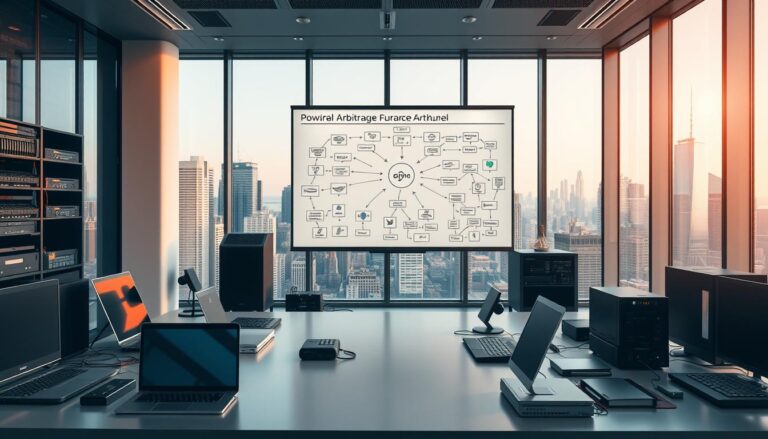How to Use Programmatic Ads to Scale Faster than Your Competitors
In 2025’s hyper-competitive digital landscape, programmatic advertising has evolved from an emerging technology to the fundamental infrastructure powering global digital ad strategies. With global programmatic advertising spend projected to hit $802.34 billion in 2024 and representing 90% of all digital display ad spend by 2026, mastering programmatic capabilities is no longer optional—it’s essential for scaling faster than competitors.
Modern programmatic advertising leverages sophisticated AI-powered algorithms, real-time bidding systems, and advanced automation to deliver precision targeting at unprecedented scale. With programmatic video ad spending alone surpassing $110 billion in 2025 and accounting for nearly 75% of new programmatic ad dollars, businesses that master these evolving strategies gain decisive competitive advantages.
The opportunity is massive: companies using AI-enhanced programmatic advertising achieve up to 40% increases in CTR and 17% improvements in campaign viewability within just one month. Success requires understanding current trends, implementing advanced automation, and leveraging emerging technologies that define the programmatic revolution.
Key Takeaways
- Programmatic ads provide unmatched scaling opportunities with AI-powered precision targeting and automation.
- Advanced real-time bidding and machine learning optimization deliver superior ROI and campaign performance.
- Emerging formats like Connected TV, DOOH, and audio programmatic open new competitive advantages.
- Generative AI and creative automation enable personalized campaigns at scale with reduced costs.
- Privacy-first strategies and first-party data activation create sustainable competitive positioning.
Understanding the 2025 Programmatic Advertising Revolution
Programmatic advertising has transformed from simple automated ad buying into a sophisticated ecosystem that leverages artificial intelligence, machine learning, and real-time optimization to deliver unprecedented results.
The AI-Powered Transformation
Artificial Intelligence and Machine Learning have become the cornerstones of modern programmatic advertising, with 83% of senior brand marketers now using AI to target digital ads. The shift from basic automation to intelligent campaign management represents a fundamental evolution in how advertisers compete.
Key technological advancements driving 2025 success include:
- AI-Powered Real-Time Bidding: Systems automatically optimize ad placement by considering user intent, bid price, and expected performance for maximum ROI
- Generative Creative Optimization (GCO): Moving beyond traditional DCO to AI-generated creative variations that adapt in real-time to user behavior
- Predictive Analytics: Advanced forecasting capabilities that anticipate market shifts and consumer behavior patterns
- Cross-Device Attribution: Comprehensive tracking across all touchpoints for complete customer journey visibility
Market Scale and Growth Opportunities
The programmatic ecosystem offers massive scaling potential across expanding channels:
- Video Dominance: Programmatic video spending exceeds $110 billion, representing 75% of new programmatic investment through 2026
- Connected TV Expansion: CTV programmatic grows rapidly with 88% of US households reachable through Connected TV advertising
- Retail Media Networks: RMN spending grew 41.7% in 2024 and projected to exceed $30 billion by 2026
- Digital Out-of-Home: DOOH programmatic enables real-time message adaptation based on environmental factors
AI-Enhanced Targeting and Optimization Strategies
Advanced targeting capabilities powered by artificial intelligence enable precision audience reach that drives superior campaign performance and competitive advantages.
Next-Generation Audience Segmentation
AI-powered audience segmentation goes far beyond traditional demographic targeting, using machine learning to identify behavioral patterns, predict future actions, and create hyper-specific audience clusters that maximize conversion potential.
Advanced targeting methodologies include:
- Behavioral Pattern Recognition: AI analyzes vast datasets to identify subtle behavioral indicators that predict purchase intent
- Predictive Audience Modeling: Machine learning forecasts which prospects are most likely to convert based on historical data patterns
- Contextual Intelligence: Enhanced contextual targeting using NLP and semantic analysis to deliver relevant ads without compromising privacy
- Cross-Platform Identity Resolution: Unified customer profiles across devices and channels for consistent, personalized messaging
Real-Time Campaign Optimization
Modern programmatic platforms optimize campaigns continuously using sophisticated algorithms that adjust bidding, creative selection, and audience targeting in real-time:
- Dynamic Budget Allocation: AI redistributes spending automatically toward highest-performing segments and placements
- Creative Performance Learning: Machine learning identifies which creative elements drive engagement and automatically optimizes variations
- Bid Strategy Automation: Advanced algorithms adjust bids based on conversion probability, competition, and market conditions
- Audience Expansion: AI identifies new audience segments similar to high-converting users for scaling opportunities
Advanced Budget Management and Scaling Strategies
Sophisticated budget allocation and bidding strategies leverage AI automation to maximize return on ad spend while scaling campaigns efficiently across multiple channels and audiences.
AI-Powered Budget Optimization
Automated budget management uses machine learning to allocate spending dynamically across campaigns, audiences, and placements based on real-time performance data and predictive analytics.
Advanced budget strategies include:
- Performance-Based Allocation: AI automatically shifts budgets toward highest-performing campaigns and audience segments
- Predictive Spend Management: Algorithms forecast optimal budget distribution based on historical performance and market conditions
- Cross-Channel Optimization: Unified budget management across display, video, CTV, and emerging programmatic channels
- Risk-Adjusted Scaling: Intelligent budget increases that maintain performance while minimizing scaling risks
Strategic Bidding Methodologies
Modern bidding strategies combine multiple optimization goals to achieve maximum efficiency:
- Value-Based Bidding: Algorithms bid based on predicted customer lifetime value rather than just immediate conversions
- Competitive Intelligence: Real-time analysis of competitor bidding patterns to identify opportunities and optimize positioning
- Inventory Quality Optimization: Automated filtering of low-quality inventory and MFA sites to ensure premium placements
- Fraud Prevention: AI-powered systems detect and prevent ad fraud in real-time to protect budget integrity
Generative AI and Creative Automation Excellence
Generative AI is revolutionizing creative development and optimization, enabling brands to produce personalized ad variations at scale while reducing production costs and improving performance.
Automated Creative Generation
Generative Creative Optimization (GCO) represents the evolution from traditional dynamic creative optimization, using AI to generate thousands of personalized ad variations that adapt to user behavior and campaign performance in real-time.
Creative automation capabilities include:
- Dynamic Creative Generation: AI produces personalized ad variations automatically based on audience preferences and behavior patterns
- Contextual Creative Adaptation: Real-time creative adjustments based on environmental factors, weather, events, and trending topics
- A/B Testing Automation: Continuous creative testing and optimization without manual intervention
- Brand Voice Consistency: AI maintains brand guidelines while generating diverse creative variations
Performance-Driven Creative Strategies
Advanced creative optimization focuses on measurable performance improvements:
- Element-Level Optimization: AI identifies which specific creative elements (headlines, images, CTAs) drive highest engagement
- Sequential Messaging: Automated creative sequences that guide users through conversion funnels with personalized messaging
- Cross-Format Adaptation: AI automatically adapts creative assets across display, video, audio, and emerging ad formats
- Performance Prediction: Machine learning forecasts creative performance before campaigns launch
Emerging Programmatic Channels and Formats
New programmatic advertising channels offer first-mover advantages and access to engaged audiences across Connected TV, digital out-of-home, audio streaming, and gaming environments.
Connected TV and Video Programmatic
Connected TV programmatic represents the fastest-growing segment, with CTV accounting for 55% of video advertising expenditures and 88% of US households reachable through CTV advertising.
CTV programmatic advantages include:
- Premium Inventory Access: High-quality, brand-safe environments with engaged viewers
- Advanced Targeting: Combination of traditional TV reach with digital precision targeting
- Cross-Screen Integration: Seamless campaigns that span traditional TV, streaming, and digital channels
- Measurable Performance: Detailed analytics and attribution that traditional TV cannot provide
Digital Out-of-Home (DOOH) Innovation
DOOH programmatic enables real-time message adaptation and precise audience targeting in physical environments:
- Environmental Responsiveness: Ads automatically adjust based on weather, traffic, events, or social media trends
- Location-Based Targeting: Precision targeting based on specific locations, demographics, and behavioral patterns
- Real-Time Optimization: Dynamic creative and messaging changes based on current conditions
- Measurable Impact: Advanced analytics including foot traffic attribution and store visit tracking
Audio and Gaming Programmatic
Emerging channels offer unique engagement opportunities:
- Audio Streaming: Programmatic audio reaches 1.2 billion global users by 2029 with high engagement rates
- Gaming Environments: In-game advertising through programmatic platforms targeting engaged gaming audiences
- Podcast Advertising: Automated ad insertion in podcast content with improved measurement and targeting
- Virtual Reality: Early-stage VR programmatic advertising with immersive brand experiences
Privacy-First Programmatic Strategies
Evolving privacy regulations and the gradual elimination of third-party cookies require sophisticated first-party data strategies and privacy-compliant targeting approaches.
First-Party Data Activation
First-party data has become the cornerstone of sustainable programmatic advertising, providing competitive advantages through direct customer relationships and privacy compliance.
First-party data strategies include:
- Customer Data Platforms: Unified data collection and activation across all customer touchpoints
- Zero-Party Data Collection: Information willingly shared by consumers for personalized experiences
- Behavioral Data Integration: Website and app behavior data for precise audience segmentation
- Predictive Modeling: AI-powered insights derived from first-party data to identify high-value prospects
Cookieless Targeting Solutions
Advanced targeting methodologies that maintain effectiveness without relying on third-party cookies:
- Contextual Targeting Evolution: AI-enhanced contextual advertising that understands content nuance and user intent
- Cohort-Based Targeting: Privacy-safe audience groups that protect individual privacy while enabling precise targeting
- Identity Resolution: Unified customer identification across devices using privacy-compliant methods
- Collaborative Data Partnerships: Strategic data partnerships that expand targeting while maintaining privacy compliance
Performance Measurement and Attribution
Advanced measurement capabilities provide comprehensive visibility into campaign performance, enabling data-driven optimization and accurate ROI assessment across all programmatic channels.
Cross-Channel Attribution Excellence
Unified measurement across all programmatic touchpoints provides complete visibility into customer journeys and campaign effectiveness, enabling more strategic budget allocation and optimization decisions.
Attribution improvements include:
- Multi-Touch Attribution: Complete tracking of all touchpoints that contribute to conversions
- Cross-Device Tracking: Unified customer journey mapping across desktop, mobile, and connected devices
- View-Through Optimization: Advanced measurement of view-through conversions and brand impact
- Incrementality Testing: Scientific measurement of true advertising impact versus organic conversions
AI-Powered Analytics and Insights
Machine learning enhances measurement capabilities and provides predictive insights:
- Predictive Performance Modeling: AI forecasts campaign performance and optimal scaling strategies
- Audience Insight Generation: Automated discovery of high-value audience segments and behaviors
- Competitive Intelligence: Market analysis and competitor performance benchmarking
- ROI Optimization: Continuous analysis and recommendations for improving return on ad spend
Conclusion: Dominating Through Programmatic Excellence
Programmatic advertising represents the most powerful scaling opportunity in digital marketing, with $802.34 billion in global spend and 90% market dominance of digital display advertising by 2026. Success requires mastering AI-powered optimization, embracing emerging channels, and implementing privacy-first strategies that build sustainable competitive advantages.
The future belongs to advertisers who combine technological sophistication with strategic insight, leveraging generative AI for creative automation, advanced audience targeting for precision reach, and comprehensive measurement for continuous optimization. By implementing these advanced programmatic strategies, businesses can achieve dramatic scaling advantages over competitors.
Key success factors for programmatic dominance include:
- Implementing AI-powered automation for real-time optimization and predictive analytics
- Expanding into emerging channels like CTV, DOOH, and audio for competitive advantages
- Building robust first-party data strategies for privacy-compliant targeting excellence
- Leveraging generative AI for scalable creative development and personalization
As programmatic advertising continues evolving at unprecedented speed, the organizations that stay ahead of technological advances, embrace emerging formats, and master data-driven optimization will capture the greatest share of market opportunities and achieve sustainable competitive leadership.
FAQ
How much can businesses expect to scale using programmatic advertising in 2025?
Companies using AI-enhanced programmatic advertising achieve up to 40% increases in CTR and 17% improvements in campaign viewability within just one month. With programmatic representing 90% of digital display ad spend by 2026, the scaling potential is virtually unlimited for those who master the technology.
What are the most important programmatic channels for competitive advantage?
Connected TV (88% household reach), Digital Out-of-Home (real-time adaptation), Retail Media Networks (41.7% growth), and emerging audio programmatic (1.2 billion global users by 2029) offer the greatest opportunities for first-mover advantages and premium audience access.
How is AI changing programmatic advertising strategies?
AI enables Generative Creative Optimization (GCO), predictive audience modeling, real-time bidding optimization, and automated budget allocation. 83% of senior marketers use AI for ad targeting, with advanced systems now controlling entire campaigns automatically for maximum efficiency.
What budget strategies work best for programmatic scaling?
AI-powered budget optimization automatically allocates spending toward highest-performing segments, while predictive spend management forecasts optimal distribution. Focus on performance-based allocation, cross-channel optimization, and risk-adjusted scaling to maximize ROI while growing reach.
How can businesses prepare for cookieless programmatic advertising?
Build robust first-party data collection strategies, implement Customer Data Platforms, focus on zero-party data acquisition, and develop AI-enhanced contextual targeting. Privacy-compliant approaches using cohort-based targeting and identity resolution maintain effectiveness without cookies.
What creative strategies provide the biggest competitive advantages?
Generative AI creates thousands of personalized ad variations automatically, while dynamic creative adaptation responds to real-time environmental factors. Implement A/B testing automation, sequential messaging, and cross-format adaptation for maximum creative performance.
How do I measure programmatic advertising success effectively?
Use multi-touch attribution, cross-device tracking, and AI-powered analytics for comprehensive performance visibility. Focus on incrementality testing, predictive performance modeling, and ROI optimization to ensure accurate measurement and continuous improvement.
What are the biggest programmatic advertising mistakes to avoid?
Avoid manual optimization when AI automation is available, don’t ignore emerging channels like CTV and DOOH, prevent ad fraud through advanced verification, and ensure brand safety through quality inventory selection. Focus on privacy compliance and first-party data strategies.






